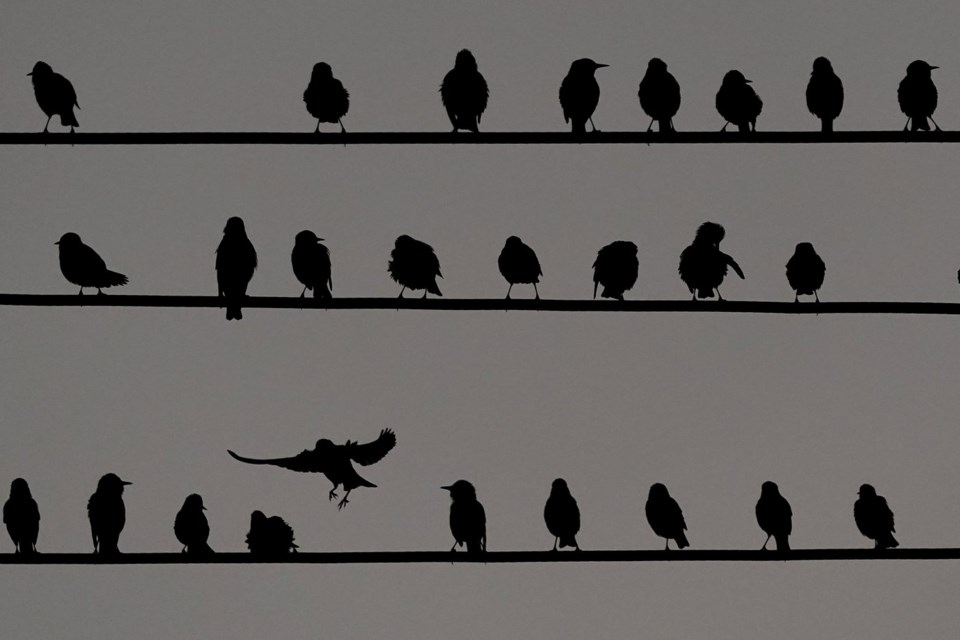As gardeners, we spend a lot of time observing nature up close -- When will my tomatoes turn red? What’s eating my hosta? What’s that white stuff on my peonies? – and we react as needed to ensure our plants survive and thrive.
But there are other, sometimes overlooked, garden residents that need our help, too: birds.
A recent study jointly conducted by scientists at Fordham University, the NYC Bird Alliance, the American Bird Conservancy and Stony Brook University in New York found that collisions with windows kill more than 1 billion birds annually in the U.S., mostly at homes and other lower buildings.
That number is likely even higher because birds can hit a window, become injured and fly away, then die elsewhere or be taken by a predator, said Connie Sanchez, program manager for bird-friendly buildings at the National Audubon Society.
But small changes by homeowners and renters can make a big difference.
Many of the collisions are the direct result of “light pollution,” the use of artificial lighting, such as from street, building or porch lights.
“Birds are drawn to light, and artificial light is drawing them off of their migratory paths and confusing them as they get closer to the light, so they collide with buildings and windows,” Sanchez said. “Or they’re led to circle in confusion, call out (in distress) and then land, drained of energy.”
The number of window strikes soars during the seasonal spring and fall periods, when birds migrate to and from their breeding homes. Sanchez said. That’s because they rely on “celestial cues” -- light from the moon and stars -- to navigate the night sky. And night-migrating small songbirds, like sparrows, warblers and thrushes, are at the highest risk of collisions.
Light pollution isn’t unique to downtowns with lighted skylines
“Surprisingly, research shows that 56% (of all bird collisions occur) at low-rise buildings just one to two stories (tall), 44% at residences and less than 1% at high-rise buildings,” Sanchez said.
Almost all the bird strikes occur at “homes, schools and places of business outside of downtown areas, where homeowners or renters can make a difference by assessing their own windows and looking at their own lighting.”
First, turn off unnecessary lights
The National Audubon Society’s Lights Out Program encourages residents, businesses, building owners and managers “to turn off excess lighting during the months migrating birds are flying overhead… to provide them safe passage between their nesting and wintering grounds.”
At my suburban New York home, that means turning off landscape lighting and keeping the porch light off overnight between mid-August and mid-November, and especially during October, when fall migration is at its peak here.
Migration in other regions will peak at different times — visit the BirdCast bird migration dashboard to find migration periods windows in your county.
“We can make the skies safer for birds by reducing the amount and intensity of exterior lighting and using only what’s necessary,” Sanchez said.
She recommends pointing landscape lights downward, using timers and sensors, and shortening their duration.
Indoor lights can be an issue, too
Interior lighting that’s visible through windows also poses a threat. Close blinds or shades at night and turn off lights when they’re not needed, Sanchez advised.
Put visual markers on windows
Birds don’t perceive glass as a barrier but instead see the reflection of their habitat or the sky.
“We need to help them see there’s a barrier (by providing) visual markers as cues,” Sanchez said.
Patterns, for example, can be created on window glass with tape, stickers or washable tempera paint. Perforated vinyl film, which makes the glass appear opaque from the outside, and FeatherFriendly marker-pattern tape are also effective defensive barriers, she said.
“The key is to ensure the patterns or artwork are densely spaced so a small bird, like a hummingbird, won’t try to fly through,” Sanchez said.
Physical barriers, like screens installed outside windows, also provide visual deterrents.
“This is a bigger problem than we realized,” Sanchez said. “We don’t necessarily see birds dying on a regular basis, but it is happening. So, whatever we can do in our own homes, in our own spaces, would really be very helpful.”
___
Jessica Damiano writes weekly gardening columns for the AP and publishes the award-winning Weekly Dirt Newsletter. You can sign up here for weekly gardening tips and advice.
___
For more AP gardening stories, go to https://apnews.com/hub/gardening.
Jessica Damiano, The Associated Press



